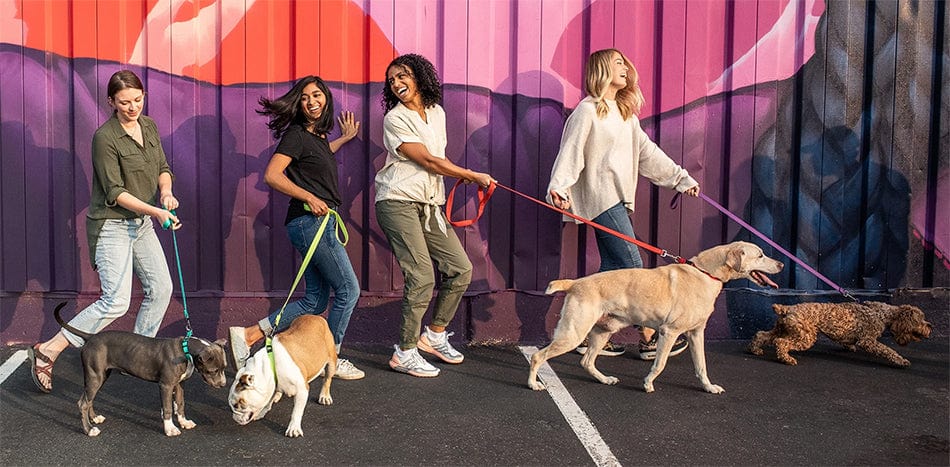Your cart is empty. Let's fix that!


Does your dog ever go wild lunging and barking at bicycles, people, or other dogs? Reactivity can be scary, but good training can help you and your dog have more relaxed walks.
Reactivity is any time a dog has a disproportionate emotional response to a stimulus. To put it more simply: your dog freaks out when they see something that should be a normal, non-alarming part of their day.
There are all sorts of possible triggers, but common ones include other dogs, bicycles, cars, and strangers. Some dogs might have more specific triggers, like people wearing hats or large dogs. Some dogs have just one trigger for their reactivity, while other dogs might have many.
Reactivity most commonly looks like whining, barking, and lunging toward their trigger, but their reaction can sometimes manifest in different ways, like nipping at you or their leash or shaking and cowering. These reactions can happen anywhere (think your dog barking at the windows when the UPS truck arrives), but for the sake of this article, we’ll be focusing on leash reactivity. This is the place where most people have difficulties with reactivity as their dogs yank on their leash to lunge at friendly faces during their daily walks.
It’s important for you as their owner to understand that reactivity is not the same thing as aggression. People often understandably but wrongly assume that a barking, lunging dog is mean and aggressive, but the truth is that they’re most often scared! They feel afraid and out of control, and they just want to get the scary thing away from them. Lead with empathy and understanding for your dog, and you can share a positive and loving training experience with your best friend.
NOTE: The following training tips are designed for leash reactivity vs. aggression. If you are experiencing issues with an aggressive dog who has hurt you or others, we recommend working with a professional dog trainer or behaviorist.
Training is a gradual process, so it’s important to take whatever measures you can to minimize bad experiences in the meantime. That means less stress and more safety for bystanders and—most importantly—your dog. Try these techniques to see what works best for your dog!
Even after you’ve completed basic dog leash reactivity training, it’s important to remember these basic techniques to fall back on. Even the best training doesn’t always hold 100% of the time, and your dog might slip up from time to time. You’re their safety net, so be ready to help your dog and manage the situation.
You don’t have to be a dog whisperer to do leash reactivity training! Dog trainers of all levels can make a difference in their dog’s reactive behaviors.
The best dog training method to tackle reactivity is counter-conditioning—a method of training that teaches them to associate their negative triggers with good things (like praise and tasty treats) in order to reduce their fear. Whether you’re noticing warning signs of reactive behavior in your dog or your previously manageable dog’s leash reactivity is getting worse, you and your dog can benefit from these training techniques!
This same counter-conditioning philosophy can be applied to other areas (like your dog barking out the window) or more complex interactions (like introducing a leash-reactive dog to another dog)! With time, patience, and consistency, you can diminish reactive behaviors in many different areas of your life with your dog.
Reactivity training can be intimidating, but remember: you’re not in this alone! There are many people who are dealing with the same issues you are, and they are ready to sympathize and help by sharing their own experiences. Look for the communities discussing leash-reactive dogs on Reddit for virtual support, or go to an expert dog trainer or behaviorist in leash-reactive dog training near you. Dog people everywhere love their reactive dogs, and we’ll get through this together.